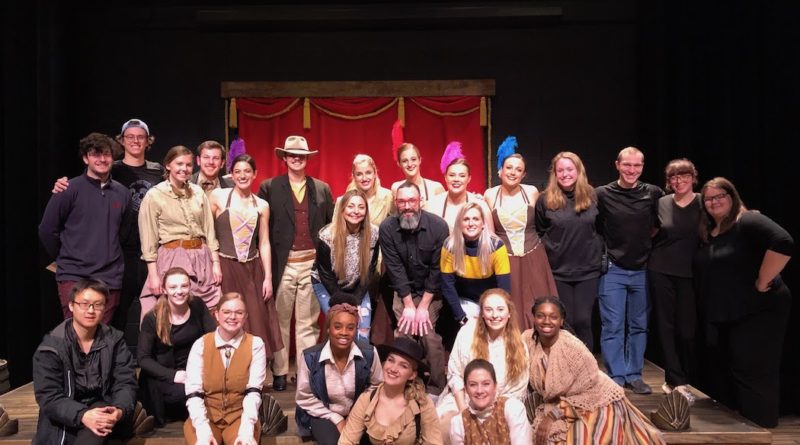An Interview with the Co-director of UD’s Production ‘The Yearnin’ Heart Longs’
UD put on an original production – ‘The Yearnin’ Heart Longs’ – last November. It was partly inspired by the Oregon District mass shooting. Cover photo courtesy of co-director Amy Jones Gibbons
Daniel Peters
Arts & Entertainment Staff Writer
Editor’s Note: Four months after the Oregon District shooting, the topic of gun violence is still pertinent to the Dayton area. Last semester, staff writer Daniel Peters covered “The Yearnin’ Heart Longs,” an immersive production that touched on God, love, hate and guns in a Wild West setting.
The show was co-directed by Jerome Yorke, full-time faculty, as a devised theater piece, or collaborative show developed by the team. While the November showing is past, the interview between Peters and Yorke provides an in-depth view into what goes into making a play and the way our environment, and specifically the recent tragedy, can be expressed through art from a variety of voices. – Melody Conrad, Arts & Entertainment Editor
- What was your inspiration for making “Yearnin’ Heart?”
The initial inspiration came from an interest in a fictional continuation of The Beatles song “Rocky Raccoon.” I was intrigued by its open ending and the possibility of choice Rocky’s nearly tragic dilemma gives him after being shot. Does the Bible that is found in the song actually “help with good Rocky’s revival,” is it used as a vehicle for revenge or is it a driver of inspiration where Rocky tries to win back his girl? It wasn’t until after the Oregon District shooting when I saw the potential to make a poem about the Second Amendment. Since my mind was already in a Wild West mood, the parallels became clear about a lawless, gun-toting society and the initial inspiration shifted to what we created.
- What were some challenges with making a devised theatre piece?
There are many if you look at devising as traditional theatre, which is what we are all used to seeing, where there is a stage of actors and lighting and costumes and set pieces that look to be realistic. I see devising as freedom from someone else’s writing. Traditional theatre is playwright centered and everything is put together from a script that is written by the author. With devising, we don’t have anything until we create it through a rehearsal process that focuses on the ensemble of actors as a collective of writers, designers and performers. The main challenge with devising is understanding the process of when it is time to create, when it is time to craft and when it is time to let everything go and give over to the power of live performance. There is consistently a greater sense of accomplishment and ownership from the ensemble after creating and performing a world premier piece of theatre they helped create.
- What was your favorite scene from the show?
My favorite moment happens during one of the movement sequences. There are about four or five seats in the audience where the Hoedown corridore comes right at you. It felt like being in the saloon as the actors danced unabashed, directly at us. It’s exhilarating.
- What is something you would do differently as a director?
I would want to get the word out about devised theatre making so that more students become engaged with the magic of creating an imaginative, physical, poignant poem for the stage. Thank you for helping me accomplish that…WINNING!
For more arts & entertainment news like Flyer News on Facebook and follow us on Twitter (@FlyerNews) and Instagram (@flyernews)

